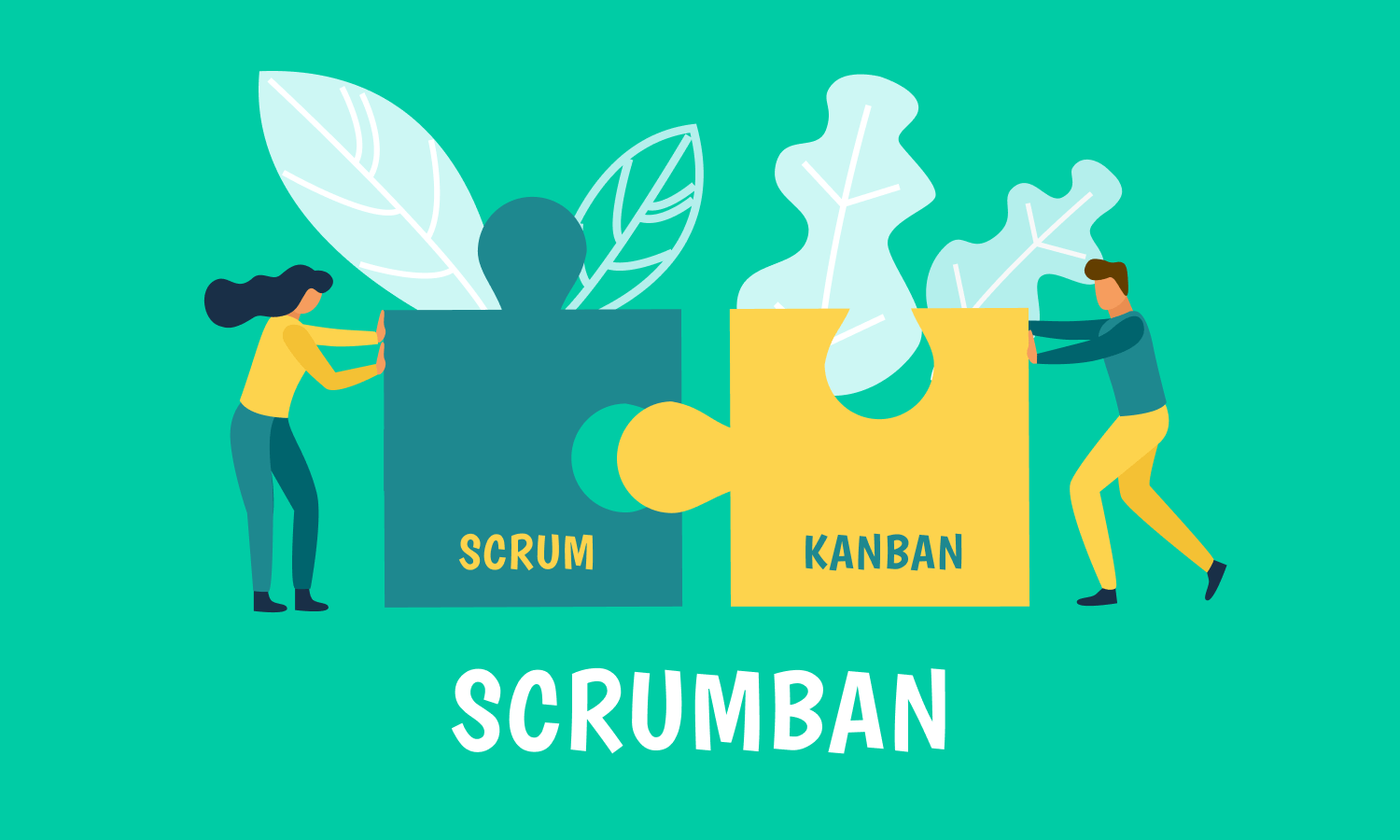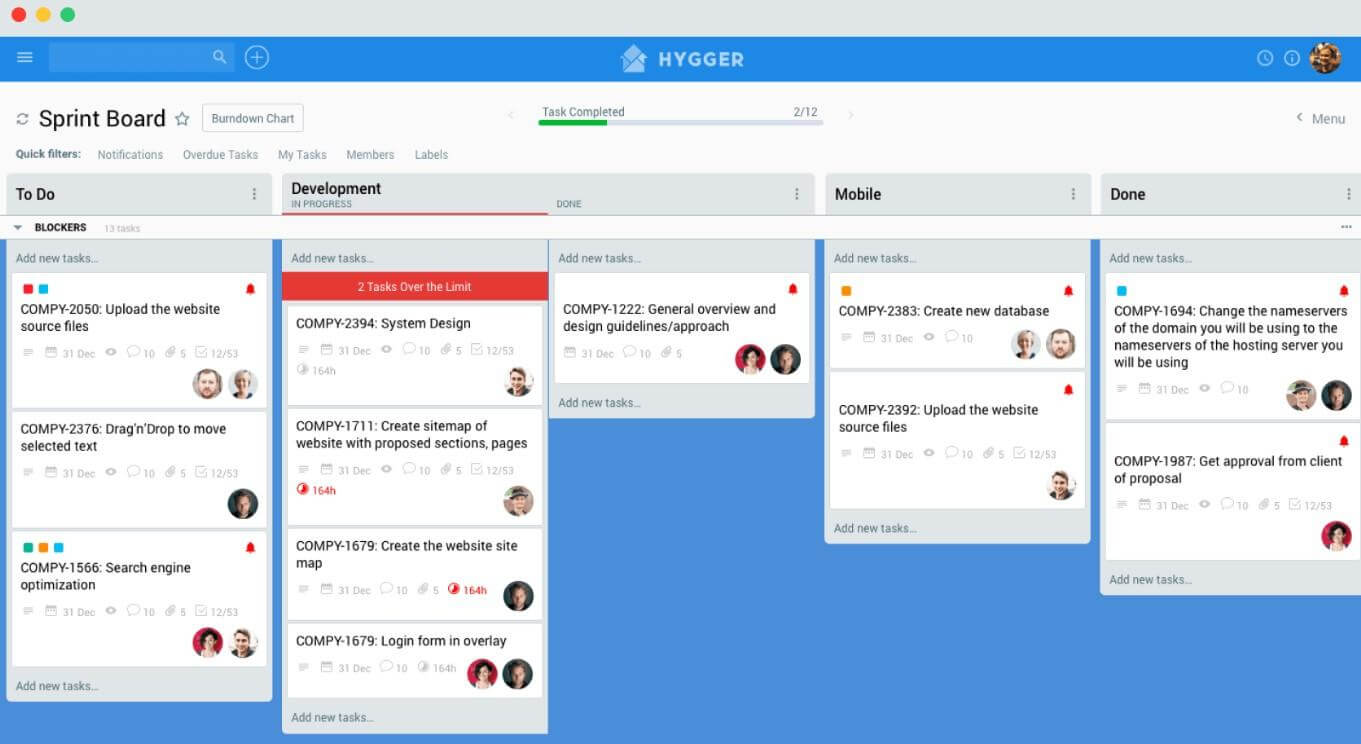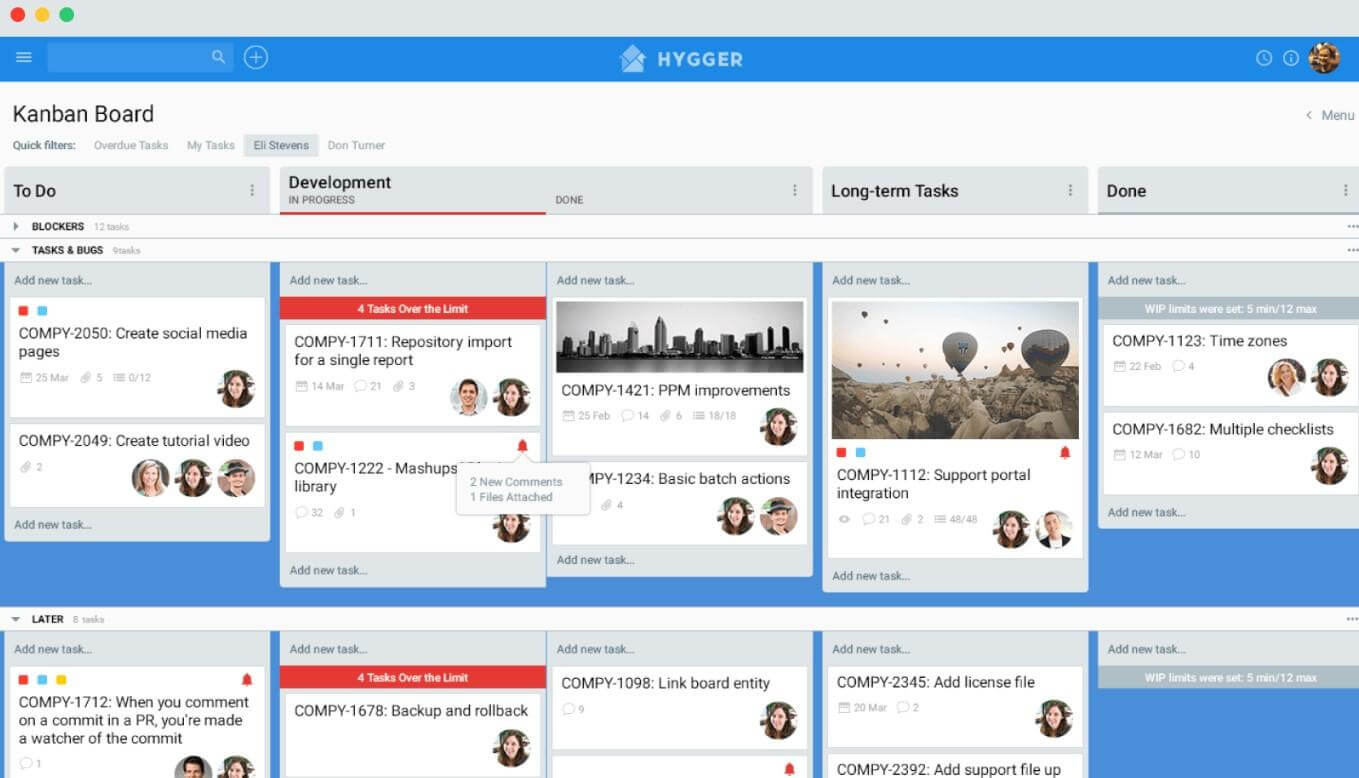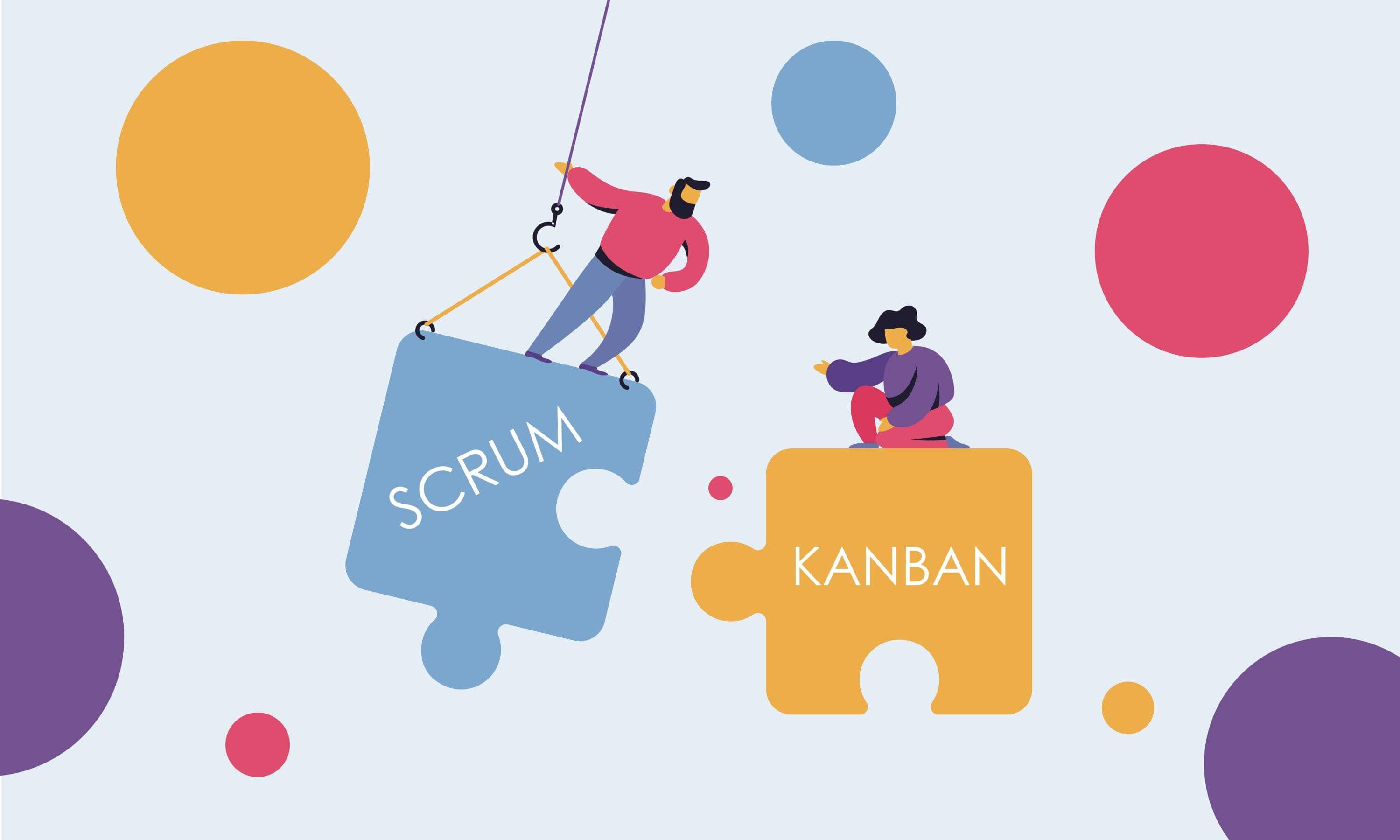Scrumban: How to Combine the Best of Two Agile Methods?

Agile is becoming more and more popular and the majority of companies adapt its methodologies. Though Scrum is by far the most frequently used Agile framework, some organizations find it difficult to implement and choose Kanban model for their software development.
Each of these frameworks has its own benefits and drawbacks, and combining two methods can be the best way to avoid any development pitfalls. This post is right about this smart combination – about Scrumban methodology.
“Scrum vs Kanban” is the battle that is well known in the Agile community. Many project managers and their teams tried to define the difference between Scrum and Kanban and often their efforts were ineffective. However, there is a logical solution that tends to get overlooked. It’s about Scrumban.
- Unlike Scrum, it does not require a huge overhaul of team structure or work management.
- Unlike Kanban, it does not leave you in the world of agility without any guidance on exactly what to do first.
But first, let’s recollect some fundamental facts about both Agile methods.

What is Scrum?
Scrum is an Agile software development framework that was first introduced in 1986 as “a new approach to commercial product development that would increase speed and flexibility”, and focuses on maximizing the team’s ability to adapt quickly and respond to new requirements. The methodology is based on the scope that is confined to a regular, repeatable work cycle, known as a sprint or iteration.
Scrum advantages:
- Allows to track project workflow and receive intermediate results
- Allows to introduce modifications quickly
- Improves team communication and involvement
- Enhances customer and client cooperation (by daily communication)

Disadvantages:
- Requires a highly experienced team
- Can be time-consuming (e.g. after each sprint a new sprint planning is done, which may consume a lot of time in case of a longer sprint)
Here’s how a typical Scrum board looks in Hygger:

What is Kanban?
Kanban was introduced by the Japanese corporation Toyota in the 1940s. Kanban revolves around a visual board for managing work in progress. Tasks start on the left side of the board and move across the board until they are considered “done”. The Kanban board is used to limit the amount of work in progress, remove waste and focus the efforts on the items that bring value to the end customer.
Advantages:
- No overproduction (products are manufactured only then when they are needed)
- Increased productivity (Kanban helps eliminate the time waste and people are able to focus on current work)
Disadvantages:
- Inflexible in demand changes and product mix (Kanban system assumes there is a stable production plan, where supplier always delivers components for production when it is needed)
- Lack of timing (Work continues until the items are completed, so it gets difficult to predict timelines, review points)
Here’s how a Hygger Kanban board looks like:

Scrumban definition
When deciding what methodology to choose, you’d better compare and test all features and abilities and have time to make the right decision. There are many specialists who think that Scrum is the most obvious choice if you are creating products, and Kanban looks better if you provide services. There is one more option – to combine them. This option is about Scrumban.
Scrumban is a hybrid of Scrum and Kanban and was originally designed as a way to transition from Scrum to Kanban. The methodology was created to meet team needs in minimizing the batching of work and adopting a Pull-based approach.
Corey Ladas described the method in the book “Scrumban: Essays on Kanban Systems for Lean Software Development”. The author claims that Scrumban is aimed to transition a development team from Scrum to Lean or Kanban.
Scrumban as the hybrid of two Agile methods provides software development teams with the flexibility to adapt and change to stakeholders and production requirements without overburdens.
This is a versatile approach to workflow management as it provides the full Scrum structure with the visualization and flexibility of Kanban.
You may easily apply Scrumban Agile to move from Scrum to Kanban painlessly.

What are the benefits of Scrumban?
- High quality: saved time allows to focus on quality control
- Saving time: there is no need to do estimating or sprint planning. The team plans only when there is a demand
- Minimizing waste and everything that is not adding value to customers
- Fact and decisions just when they are needed (Just-in-time)
- Continuous improvement (Kaizen)
- Process improvement by adding some Scrum values if needed
- Perfect visualization of a Scrumban board
Scrumban practices
1. Extended board
Use the traditional Kanban board divided into three columns “To do”, “Work in progress” and “Done”. Column “Work in progress” can be divided into more sections with new columns indicating the particular stage a task goes through. In this case, everybody knows the current situation and tasks are completed as soon as possible.
New tasks are put on the board without assigning them to a particular team member. For this reason, team members are able to choose which task they would like to work with.
2. Backlog limit
Prepare a list of tasks, put them into the backlog and set work in progress limit for the column. The team pulls items from the backlog into the process until it becomes empty. The empty backlog is a trigger that it is time to plan more tasks.
3. Prioritization
Find tasks that you are not going to finish by release time, and get rid of them by moving to a future release. This is actually an important part of any process to deliver releases at a fixed time.
As a result, Scrumbun provides you with the following:
- Market-driven development. You are able to build new features that are demanded by the market (clients, partners, etc.) rather than working on something you expect will make someone happy.
- More flexibility. For example, the Waterfall approach assumes long planning, delivering big updates and analyzing the results. This does not work in today’s fast-paced business environment. Agile and Scrumban allow being flexible, to react to new events and requests from customers quickly, and see results and make amendments. This is actually on od the reason why people select Agile in the opposition Agile vs Waterfall.
- Continuous delivery. Dividing the overall development process into small sprints, you are constantly delivering new software. This is good both for the product, as it becomes functional, and users, as they get the features they need. It’s also beneficial for the programming team. Programmers like writing code that works in production.
Final words
Scrumban software is really suitable for projects where it is difficult to predict the amount of work to be done over several weeks.
Scrumban combines the flexibility, adaptability and monitoring ability of Scrum with the Kanban’s ease of visualization and organization of project tasks (you may use Scrumban boards for various projects).
This hybrid method combines the best of both Agile approaches to carry out projects. Rather than partially apply one of the methods, it is better to install tools that are practical and shared by the whole project team and try to use available Scrumban templates. What do you think about it?




